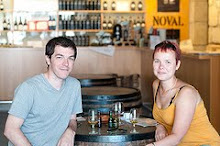Our last day in Moscow we visited the interesting Fallen Hero’s Monument Park and the "goose-bump raising" Gulag Museum, both offering a glimpse of Russia’s communist past. The monument park includes statues, monuments and relics of revolutionary leaders that had either been placed in storage or left to decay (with over 15 statues of Lenin and Stalin, including one where the head was visibly defaced). There are also statues reflecting daily life and themes such as everyday men, women, the army and navy, flowers, animals, music, fairy tales and dancing.
Running out of time, we rushed on to the Gulag Museum. A small museum located in the high-end district of Moscow (hopefully they’re able to remain) has great English write-ups explaining Lenin’s inception of the gulag system and Stalin’s subsequent Reign of Terror. It was a chilling setting to be surrounded by the letters, stories, photos and artifacts of everyday Russians (doctors, lawyers, writers, etc.) who were forced into “work” camps, i.e. gulags, throughout all of Russia. Interestingly, the gulag’s originally served as prisons, but under Stalin’s rule he quickly began relocating those with petty crimes, such as petty theft, unexcused absences from work, anti-government jokes, and eventually anyone that he or his government deemed untrustworthy (e.g., most intellectuals in St. Petersburg and Moscow, or even family members of these intellectuals). Nearly 1.6 million Russians were murdered / died in the gulags between the 1920's to 1953. Those that survived spent 10 to 20 years in the system without even a trial, only to be “pardoned/rehabilitated” of their crimes in the 1950’s to 1990’s. The museum also included artwork by former victims, a photography exhibit of a former Siberian Uranium mining camp and a series of diary entries from Eufrosinia Kersnovskaya, a woman who managed to escape. Combined, it offered a remarkably honest and horrifyingly blunt depiction of Stalin’s brutal treatment of his own people.
With much to digest from our museum visit we ran back to the apartment for our bags and headed to the train station to depart for our next leg. Two nights and three days later we would arrive in Ekaterinburg, approximately 1,780 km east of Moscow.
Next Up: Travels by train and a stop in central Russia.
 Logging you in...
Logging you in...
